Performance Analysis of Latency-Aware Data Management in Industrial IoT Networks †
Abstract
:1. Introduction
- We propose a distributed data management approach to store data in a number of locations in an industrial environment, as opposed to the current industrial state-of-the-art approaches where all data are centrally stored and served from a unique location. We exploit the DML for minimizing the number of proxies in an industrial IoT network and to reduce as much as possible the overall system resource consumption.
- We provide a multi-faceted performance evaluation, both through experiments and through simulations, for achieving scales much larger than what available experimental conditions allow. At first, we implement the DML with 95 real devices and evaluate its performance on the FIT IoT-LAB testbed [14]. Then, we use the simulation model, validate it against the experimental results and evaluate the DML performance in larger network sizes and more general topologies.
- We demonstrate that the proposed method (i) guarantees that the access latency stays below the given threshold and (ii) significantly outperforms traditional centralized and even distributed approaches, both in terms of average data access latency and in terms of maximum latency guarantees.
- We also demonstrate an additional flexibility of the proposed approach, by showing that it can be tuned both to guarantee that the average of the mean latency stays below or that the average of the worst-case latency stays below .
2. Literature Review
3. System Modeling
4. The Data Management Layer
| Algorithm 1: ProxySelection+. |
 |
5. Implementation and Experimental Evaluation
5.1. Experimental Strategy
5.2. Experimental Results
6. Large-Scale Simulations
6.1. Validation of the Simulation Model and Simulation Settings
6.2. Simulation Results
7. Conclusions and Future Work
Author Contributions
Funding
Conflicts of Interest
References
- Drath, R.; Horch, A. Industrie 4.0: Hit or Hype? [Industry Forum]. IEEE Ind. Electron. Mag. 2014, 8, 56–58. [Google Scholar] [CrossRef]
- Huang, V.K.L.; Pang, Z.; Chen, C.J.A.; Tsang, K.F. New Trends in the Practical Deployment of Industrial Wireless: From Noncritical to Critical Use Cases. IEEE Ind. Electron. Mag. 2018, 12, 50–58. [Google Scholar] [CrossRef]
- Lucas-Estan, M.C.; Raptis, T.P.; Sepulcre, M.; Passarella, A.; Regueiro, C.; Lazaro, O. A software defined hierarchical communication and data management architecture for industry 4.0. In Proceedings of the 2018 14th Annual Conference on Wireless On-demand Network Systems and Services (WONS), Isola, France, 6–8 February 2018; pp. 37–44. [Google Scholar] [CrossRef]
- Molina, E.; Lazaro, O.; Sepulcre, M.; Gozalvez, J.; Passarella, A.; Raptis, T.P.; Ude, A.; Nemec, B.; Rooker, M.; Kirstein, F.; et al. The AUTOWARE Framework and Requirements for the Cognitive Digital Automation. In Proceedings of the 18th IFIP WG 5.5 Working Conference on Virtual Enterprises (PRO-VE), Vicenza, Italy, 18–20 September 2017. [Google Scholar]
- Gaj, P.; Jasperneite, J.; Felser, M. Computer Communication Within Industrial Distributed Environment— Survey. IEEE Trans. Ind. Inf. 2013, 9, 182–189. [Google Scholar] [CrossRef]
- Pang, Z.; Luvisotto, M.; Dzung, D. Wireless High-Performance Communications: The Challenges and Opportunities of a New Target. IEEE Ind. Electron. Mag. 2017, 11, 20–25. [Google Scholar] [CrossRef]
- Han, S.; Zhu, X.; Mok, A.K.; Chen, D.; Nixon, M. Reliable and Real-Time Communication in Industrial Wireless Mesh Networks. In Proceedings of the 2011 17th IEEE Real-Time and Embedded Technology and Applications Symposium, Chicago, IL, USA, 11–14 April 2011; pp. 3–12. [Google Scholar] [CrossRef]
- Steiner, W.; Poledna, S. Fog computing as enabler for the Industrial Internet of Things. Elektrotech. Inf. 2016, 133, 310–314. [Google Scholar] [CrossRef]
- IEEE Standard for Local and Metropolitan Area Networks—Part 15.4: Low-Rate Wireless Personal Area Networks (LR-WPANs) Amendment 1: MAC Sublayer; IEEE Std 802.15.4e-2012 (Amendment to IEEE Std 802.15.4-2011); IEEE: Piscataway, NJ, USA, 2012; pp. 1–225. [CrossRef]
- Chen, D.; Nixon, M.; Mok, A. WirelessHARTTM; Springer: Berlin, Germany, 2010. [Google Scholar]
- Mahmud, R.; Kotagiri, R.; Buyya, R. Fog Computing: A Taxonomy, Survey and Future Directions. In Internet of Everything: Algorithms, Methodologies, Technologies and Perspectives; Di Martino, B., Li, K.C., Yang, L.T., Esposito, A., Eds.; Springer: Singapore, 2018; pp. 103–130. [Google Scholar] [CrossRef]
- Xu, L.D.; He, W.; Li, S. Internet of Things in Industries: A Survey. IEEE Trans. Ind. Inf. 2014, 10, 2233–2243. [Google Scholar] [CrossRef]
- Rodriguez, P.; Sibal, S. SPREAD: Scalable platform for reliable and efficient automated distribution. Comput. Netw. 2000, 33, 33–49. [Google Scholar] [CrossRef] [Green Version]
- Adjih, C.; Baccelli, E.; Fleury, E.; Harter, G.; Mitton, N.; Noel, T.; Pissard-Gibollet, R.; Saint-Marcel, F.; Schreiner, G.; Vandaele, J.; et al. FIT IoT-LAB: A large scale open experimental IoT testbed. In Proceedings of the 2015 IEEE 2nd World Forum on Internet of Things (WF-IoT), Milan, Italy, 14–16 December 2015; pp. 459–464. [Google Scholar] [CrossRef]
- Watteyne, T.; Handziski, V.; Vilajosana, X.; Duquennoy, S.; Hahm, O.; Baccelli, E.; Wolisz, A. Industrial Wireless IP-Based Cyber-Physical Systems. Proc. IEEE 2016, 104, 1025–1038. [Google Scholar] [CrossRef]
- Guglielmo, D.D.; Brienza, S.; Anastasi, G. IEEE 802.15.4e: A survey. Comput. Commun. 2016, 88, 1–24. [Google Scholar] [CrossRef]
- Raptis, T.P.; Passarella, A. A distributed data management scheme for industrial IoT environments. In Proceedings of the 2017 IEEE 13th International Conference on Wireless and Mobile Computing, Networking and Communications (WiMob), Rome, Italy, 9–11 October 2017; pp. 196–203. [Google Scholar] [CrossRef]
- Heo, J.; Hong, J.; Cho, Y. EARQ: Energy Aware Routing for Real-Time and Reliable Communication in Wireless Industrial Sensor Networks. IEEE Trans. Ind. Inf. 2009, 5, 3–11. [Google Scholar] [CrossRef]
- Kim, D.; Wang, W.; Sohaee, N.; Ma, C.; Wu, W.; Lee, W.; Du, D.Z. Minimum Data-latency-bound K-sink Placement Problem in Wireless Sensor Networks. IEEE/ACM Trans. Netw. 2011, 19, 1344–1353. [Google Scholar] [CrossRef]
- Raptis, T.P.; Passarella, A.; Conti, M. Distributed Path Reconfiguration and Data Forwarding in Industrial IoT Networks. In Proceedings of the 16th IFIP International Conference on Wired/Wireless Internet Communications (WWIC), Shanghai, China, 7–11 May 2018. [Google Scholar]
- Antonopoulos, C.; Panagiotou, C.; Keramidas, G.; Koubias, S. Network driven cache behavior in wireless sensor networks. In Proceedings of the 2012 IEEE International Conference on Industrial Technology, Hong Kong, China, 10–13 December 2012; pp. 567–572. [Google Scholar] [CrossRef]
- Panagiotou, C.; Antonopoulos, C.; Koubias, S. Performance enhancement in WSN through data cache replacement policies. In Proceedings of the 2012 IEEE 17th International Conference on Emerging Technologies Factory Automation (ETFA 2012), Krakow, Poland, 17–21 September 2012; pp. 1–8. [Google Scholar] [CrossRef]
- Saifullah, A.; Xu, Y.; Lu, C.; Chen, Y. End-to-End Communication Delay Analysis in Industrial Wireless Networks. IEEE Trans. Comput. 2015, 64, 1361–1374. [Google Scholar] [CrossRef] [Green Version]
- Li, J.; Zhu, X.; Gao, X.; Wu, F.; Chen, G.; Du, D.Z.; Tang, S. A Novel Approximation for Multi-hop Connected Clustering Problem in Wireless Sensor Networks. In Proceedings of the 2015 IEEE 35th International Conference on Distributed Computing Systems, Columbus, OH, USA, 29 June–2 July 2015; pp. 696–705. [Google Scholar] [CrossRef]
- Raptis, T.P.; Passarella, A.; Conti, M. Maximizing industrial IoT network lifetime under latency constraints through edge data distribution. In Proceedings of the 2018 IEEE Industrial Cyber-Physical Systems (ICPS), Saint Petersburg, Russia, 15–18 May 2018; pp. 708–713. [Google Scholar] [CrossRef]
- Luo, Y.; Duan, Y.; Li, W.; Pace, P.; Fortino, G. Workshop Networks Integration Using Mobile Intelligence in Smart Factories. IEEE Commun. Mag. 2018, 56, 68–75. [Google Scholar] [CrossRef]
- Luo, Y.; Duan, Y.; Li, F.W.; Pace, P.; Fortino, G. A Novel Mobile and Hierarchical Data Transmission Architecture for Smart Factories. IEEE Trans. Ind. Inf. 2018, 14, 3534–3546. [Google Scholar] [CrossRef]
- Zats, S.; Su, R.; Watteyne, T.; Pister, K.S.J. Scalability of Time Synchronized wireless sensor networking. In Proceedings of the IECON 2011—37th Annual Conference of the IEEE Industrial Electronics Society, Melbourne, Australia, 7–10 November 2011; pp. 3011–3016. [Google Scholar] [CrossRef]
- Krishnamurthy, L.; Adler, R.; Buonadonna, P.; Chhabra, J.; Flanigan, M.; Kushalnagar, N.; Nachman, L.; Yarvis, M. Design and Deployment of Industrial Sensor Networks: Experiences from a Semiconductor Plant and the North Sea. In Proceedings of the 3rd International Conference on Embedded Networked Sensor Systems, San Diego, CA, USA, 2–4 November 2005; ACM: New York, NY, USA, 2005; pp. 64–75. [Google Scholar] [CrossRef]
- Dijkstra, E.W. A note on two problems in connexion with graphs. Numer. Math. 1959, 1, 269–271. [Google Scholar] [CrossRef] [Green Version]
- Eugster, P.T.; Felber, P.A.; Guerraoui, R.; Kermarrec, A.M. The Many Faces of Publish/Subscribe. ACM Comput. Surv. 2003, 35, 114–131. [Google Scholar] [CrossRef]
- CC2420 Datasheet. Available online: http://www.ti.com/lit/ds/symlink/cc2420.pdf (accessed on 14 November 2017).
- Kotian, R.; Exarchakos, G.; Liotta, A. Data Driven Transmission Power Control for Wireless Sensor Networks. In Proceedings of the 8th International Conference on Internet and Distributed Computing Systems, Windsor, UK, 2–4 September 2015; Springer: New York, NY, USA, 2015; Volume 9258, pp. 75–87. [Google Scholar] [CrossRef]
- Network-Based Communication for Industrie 4.0. Publications of Plattform Industrie 4.0. 2016. Available online: www.plattform-i40.de (accessed on 14 November 2017).
- Winter, T.; Thubert, P.; Brandt, A.; Hui, J.; Kelsey, R.; Levis, P.; Pister, K.; Struik, R.; Vasseur, J.; Alexander, R. RPL: IPv6 Routing Protocol for Low-Power and Lossy Networks; RFC 6550; RFC Editor: Fremont, CA, USA, 2012. [Google Scholar]
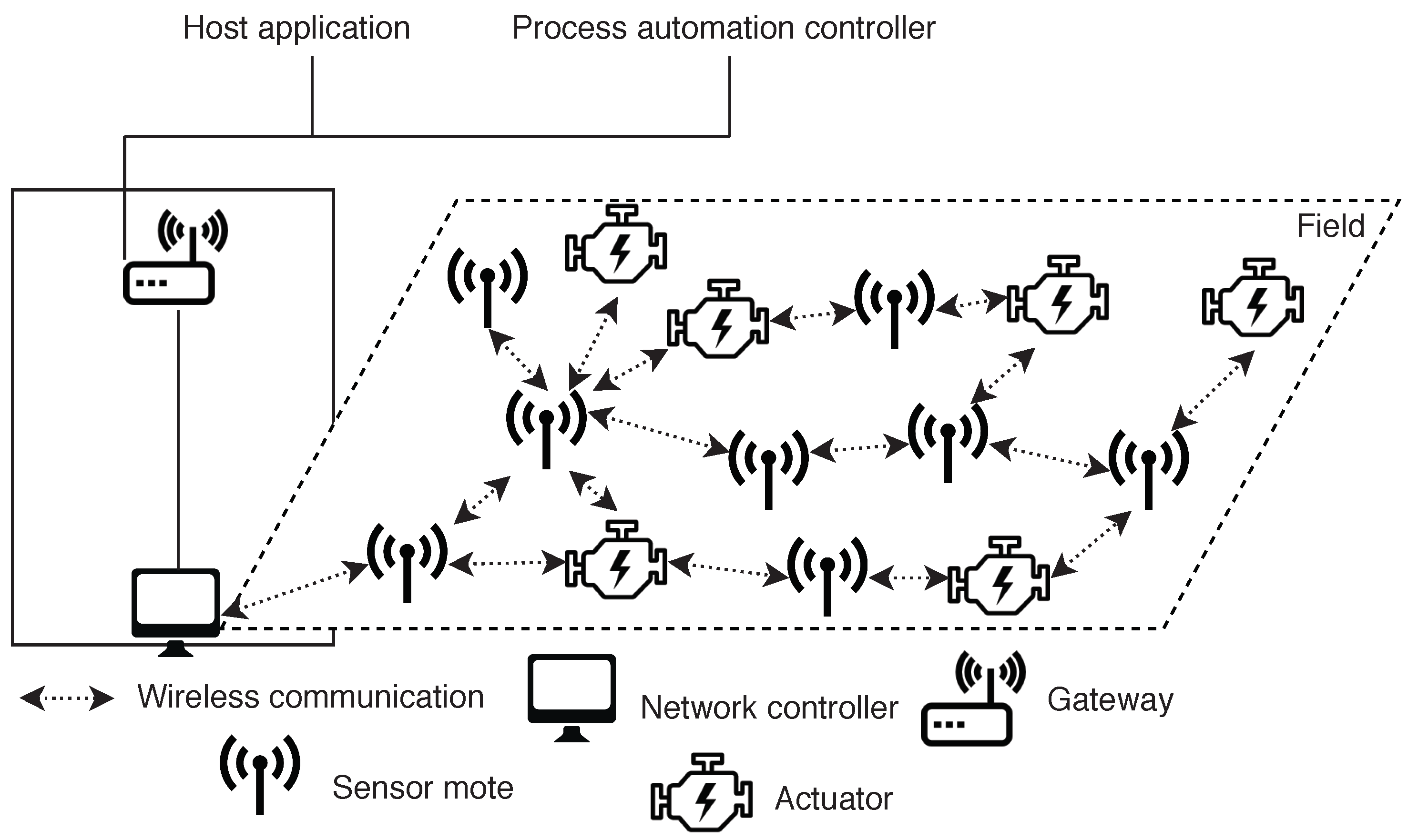
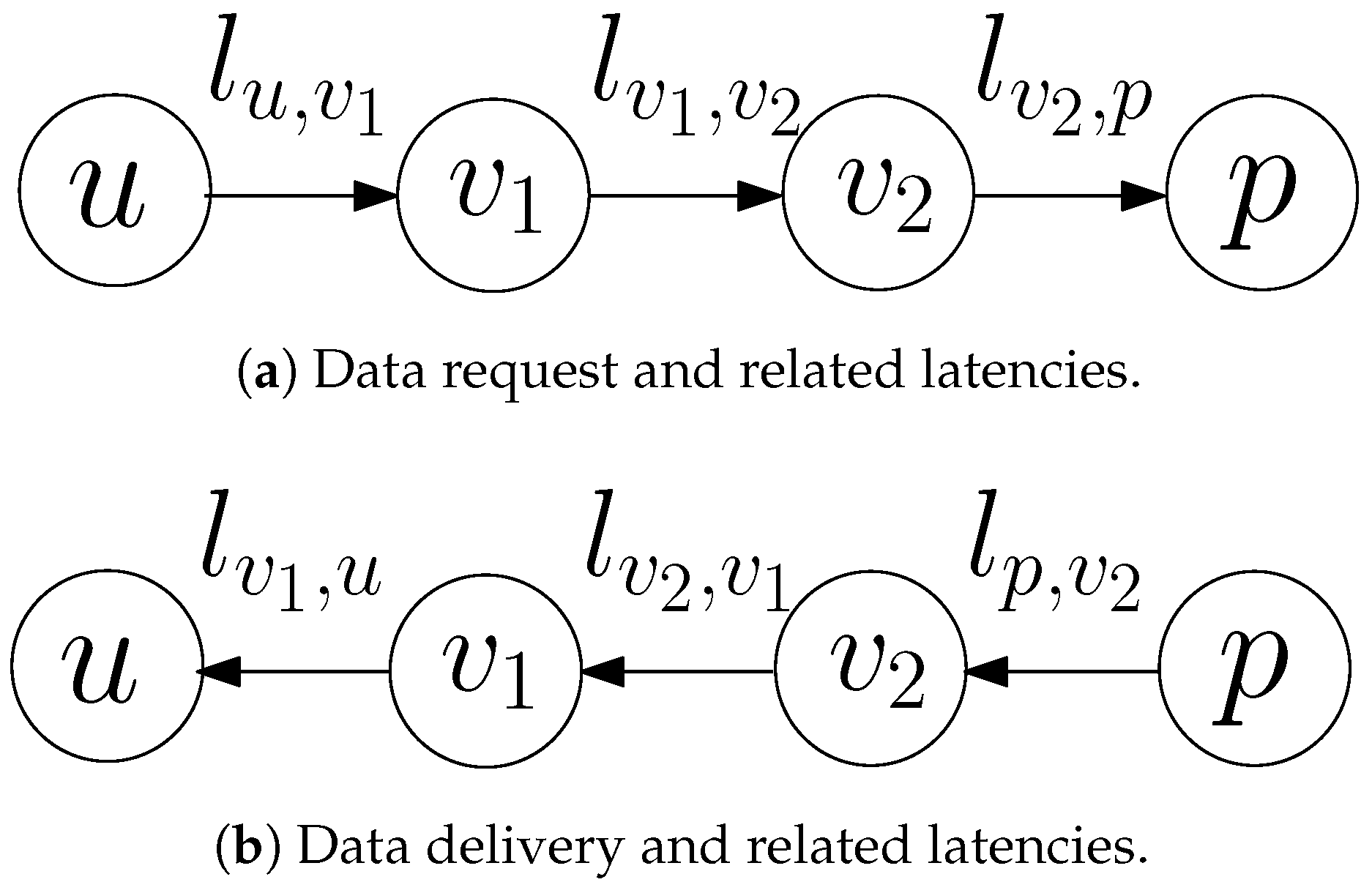



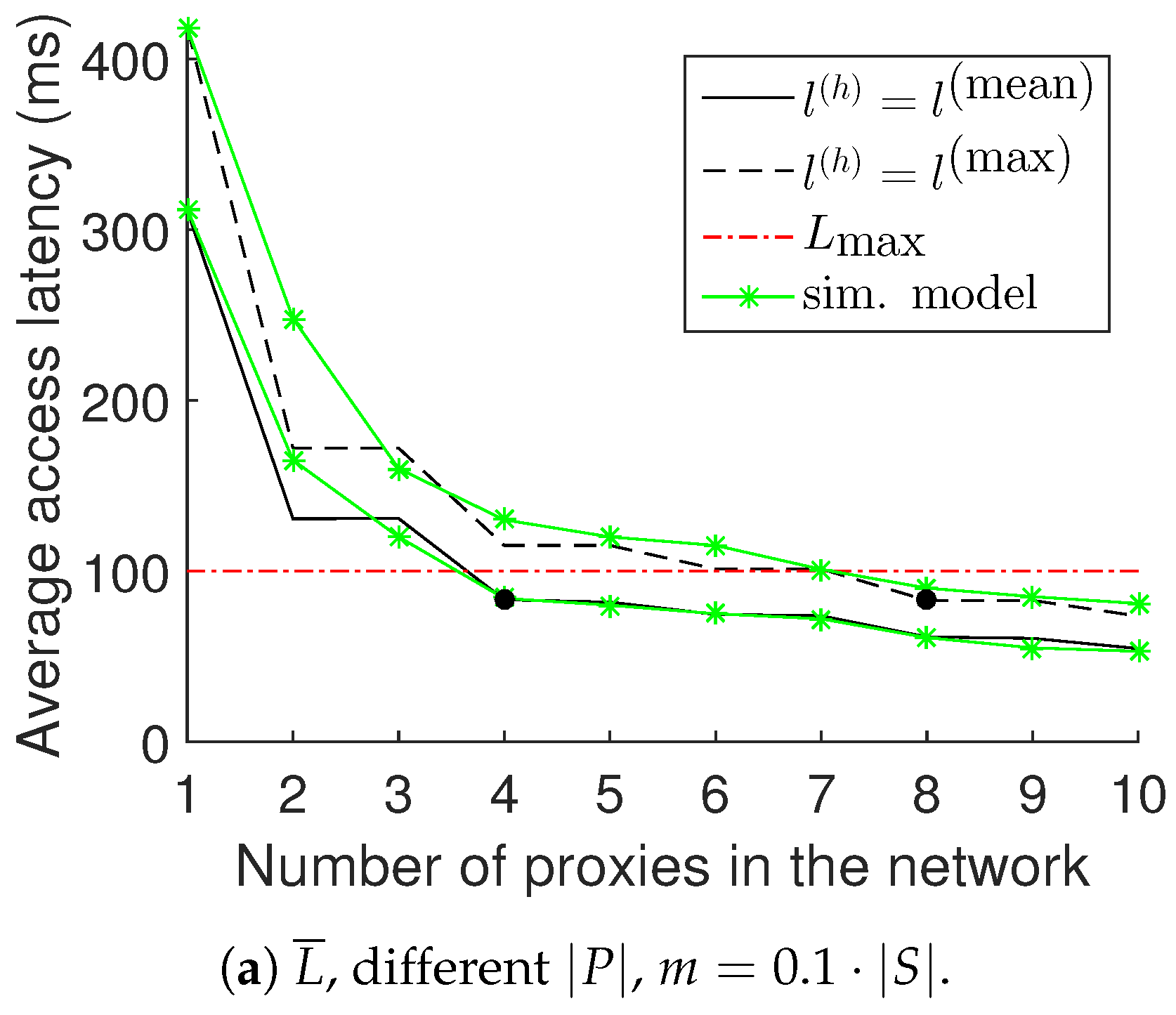
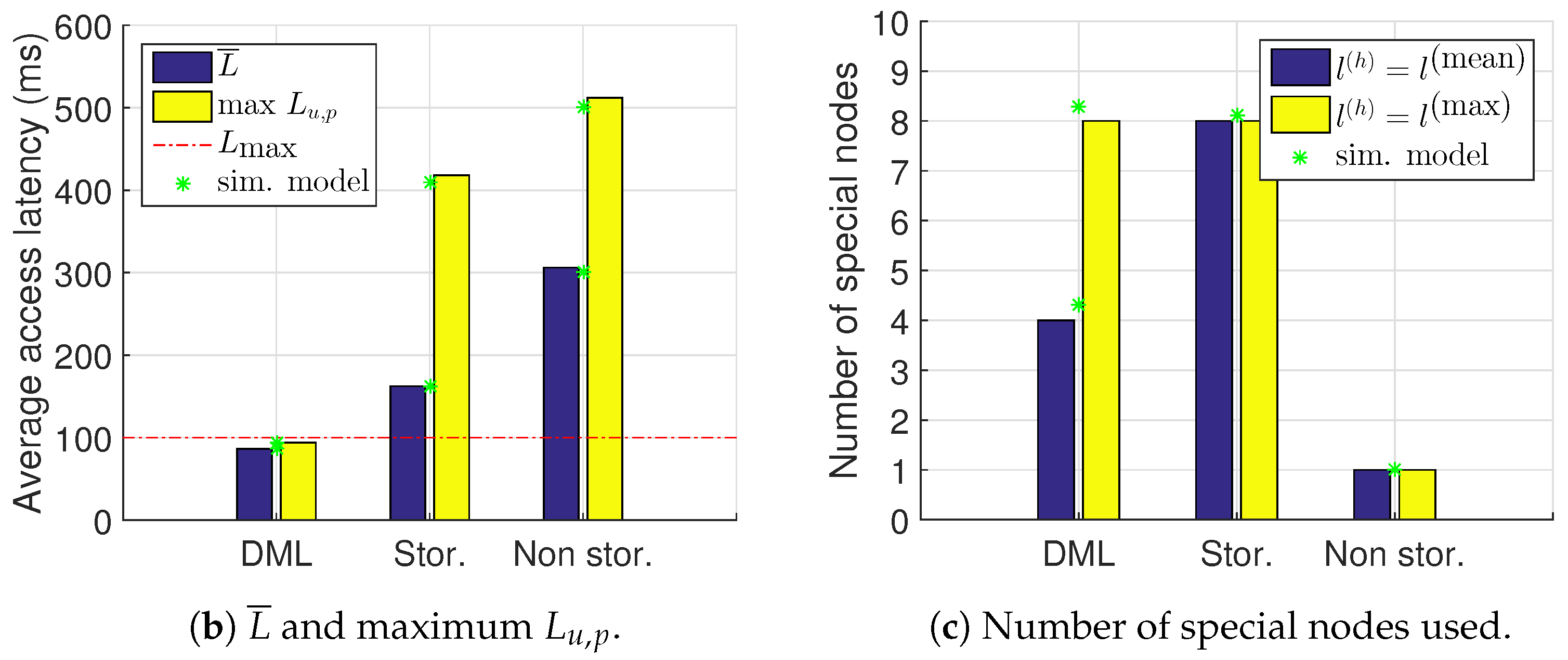
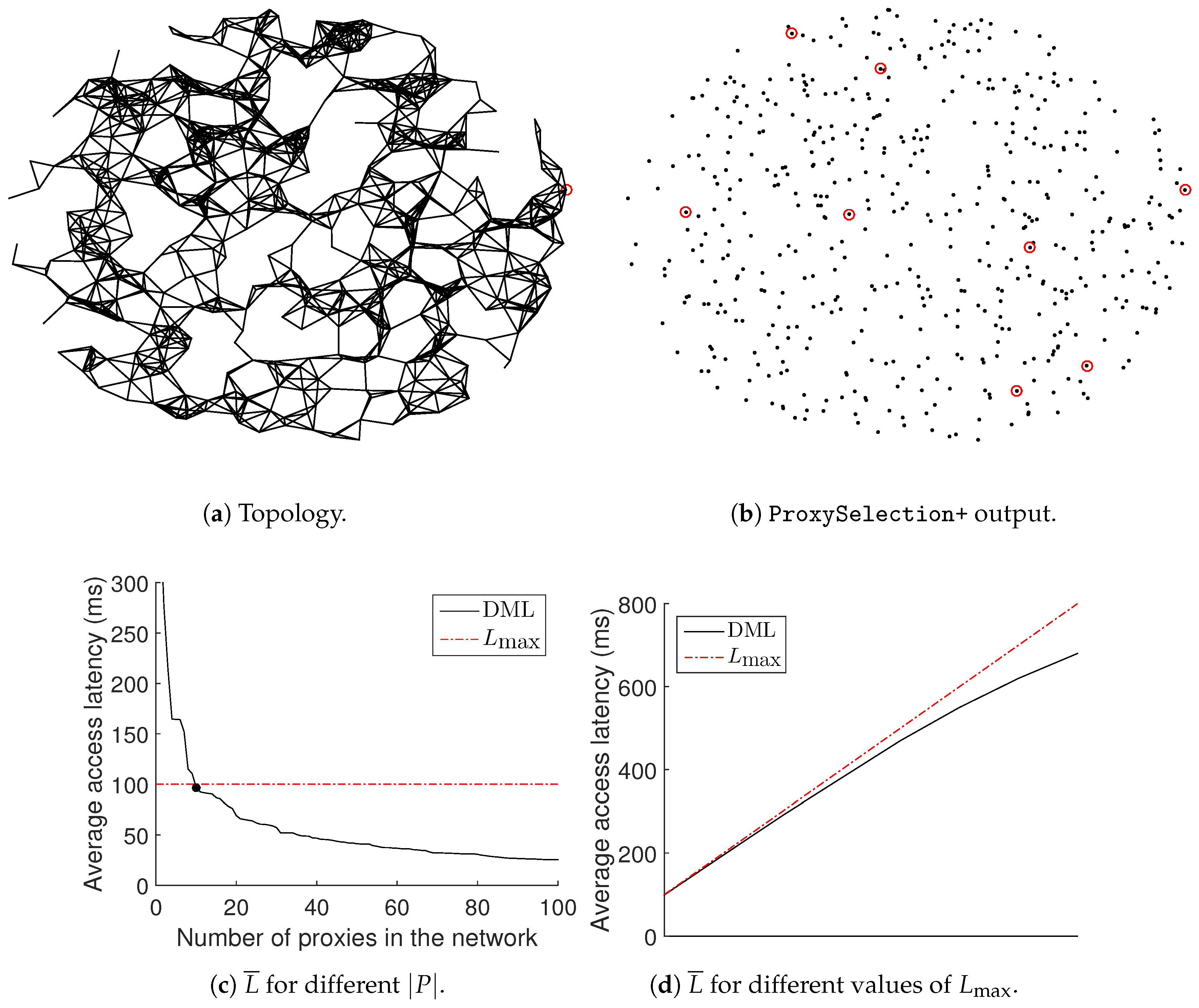
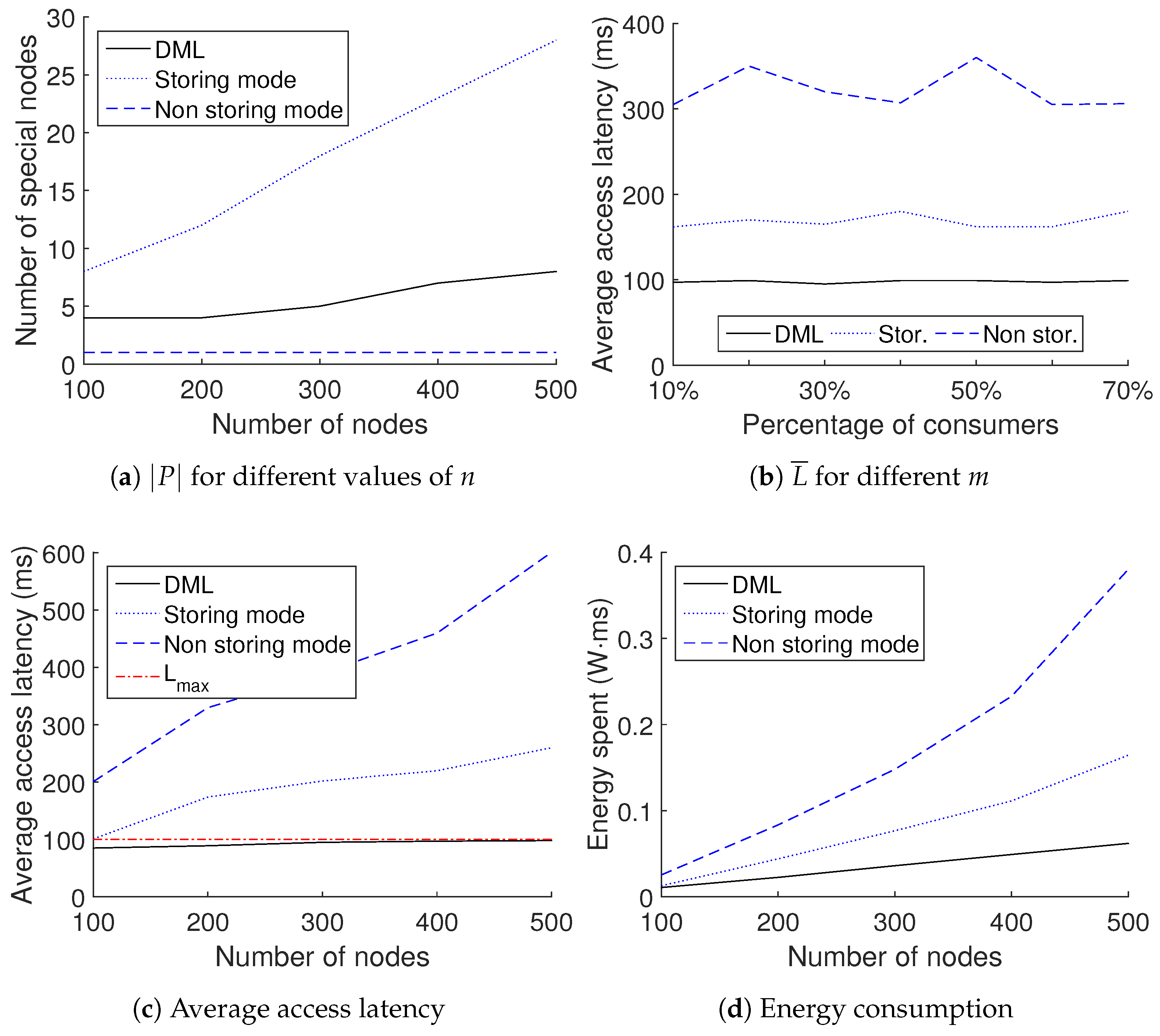
| Type of Measured Latency | Notation | Value (ms) | |
|---|---|---|---|
| Highest latency reported | 23 | ||
| Mean latency | 17.4 | 3.2 | |
| Lowest latency reported | - | 13 |
© 2018 by the authors. Licensee MDPI, Basel, Switzerland. This article is an open access article distributed under the terms and conditions of the Creative Commons Attribution (CC BY) license (http://creativecommons.org/licenses/by/4.0/).
Share and Cite
Raptis, T.P.; Passarella, A.; Conti, M. Performance Analysis of Latency-Aware Data Management in Industrial IoT Networks. Sensors 2018, 18, 2611. https://doi.org/10.3390/s18082611
Raptis TP, Passarella A, Conti M. Performance Analysis of Latency-Aware Data Management in Industrial IoT Networks. Sensors. 2018; 18(8):2611. https://doi.org/10.3390/s18082611
Chicago/Turabian StyleRaptis, Theofanis P., Andrea Passarella, and Marco Conti. 2018. "Performance Analysis of Latency-Aware Data Management in Industrial IoT Networks" Sensors 18, no. 8: 2611. https://doi.org/10.3390/s18082611
APA StyleRaptis, T. P., Passarella, A., & Conti, M. (2018). Performance Analysis of Latency-Aware Data Management in Industrial IoT Networks. Sensors, 18(8), 2611. https://doi.org/10.3390/s18082611






